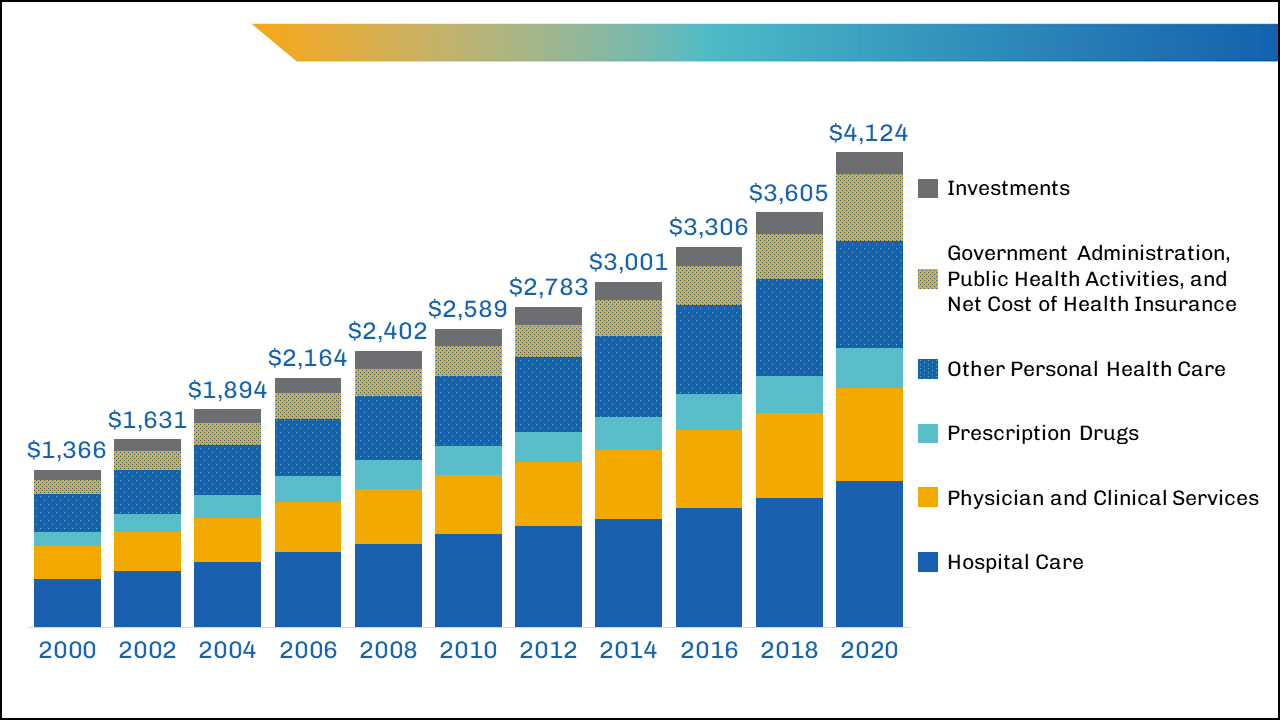Just How Healthcare RCM Solutions Streamline Invoicing and Collections
Just How Healthcare RCM Solutions Streamline Invoicing and Collections
Blog Article
A Comprehensive Guide on How Medical Care RCM Functions to Simplify Payment and Collections
Navigating the complexities of health care revenue cycle management (RCM) is essential for service providers aiming to boost their payment and collections processes. The guide unloads the ins and outs of RCM, from patient registration to balance dues management, offering understandings into enhancing each action. Incorporating sophisticated modern technology and standard procedures can dramatically decrease case denials and speed up payment cycles. Yet, real challenge hinges on effortlessly merging these elements to improve money circulation. As we discover the core components and methods that drive performance, one concern continues to be: how can medical care entities ideal position themselves to grow financially in an ever-evolving market?
Understanding Profits Cycle Monitoring
RCM is a vital administrative feature that encompasses the whole financial procedure of client treatment, from the first appointment establishing to the final payment of the balance. It is a complicated procedure created to identify, accumulate, and manage the revenue from the services provided to clients.
The RCM procedure begins when an individual routines a visit and extends through the individual's treatment trip, including invoicing and collections. A key purpose is to decrease the time in between providing a service and obtaining repayment, therefore enhancing the company's monetary wellness. RCM involves various functions such as client registration, insurance coverage verification, fee capture, coding, asserts entry, repayment uploading, and taking care of denials and appeals.
Trick Parts of RCM
In the world of Revenue Cycle Administration (RCM), comprehending its vital elements is essential to attaining monetary effectiveness within health care companies. RCM is an extensive process that encompasses various phases, each critical to ensuring efficient billing and collections. The primary components consist of patient registration, insurance confirmation, cost capture, coding, case entry, payment publishing, and accounts receivable management.


When coded, claims are submitted to payers, where precision is vital to prevent beings rejected or delays - Healthcare RCM. Repayment uploading entails tape-recording the obtained repayments, which enables for the settlement of accounts. Finally, balance dues management concentrates on tracking and dealing with unsettled cases, guaranteeing timely follow-up and resolution
Each part of RCM is adjoined, and inadequacies in any type of component can interfere with the whole cycle. As a result, mastering these components is important for health care carriers to maximize revenue and enhance their financial wellness.
Approaches for Reliable Billing

Systematizing payment treatments throughout the organization is one more crucial technique. Developing clear guidelines for paperwork, coding, and submission assists keep consistency and compliance with governing requirements. Educating personnel regularly on these procedures guarantees everybody is current with the most recent changes in payment codes and payer policies.
Exact fee capture is essential in avoiding revenue leakage. Applying normal audits and monitoring systems enables the recognition and adjustment of disparities prior to they influence income. In addition, maintaining open lines of communication with payers helps to rapidly resolve any kind of conflicts or misconceptions that might develop.

Last but not least, appealing people early in the billing process by offering clear estimates and educational materials concerning their financial obligations can dramatically decrease complication and enhance repayment timeliness. These methods jointly add to a much more economically healthy and balanced and effective payment system.
Enhancing Collections Procedures
Offered the complexities of medical payment and the variety of payer needs, helpful hints improving the collections procedure involves executing strategic steps that make sure precise and timely repayment of solutions made. Automation devices can help in tracking claim conditions, sending out prompt suggestions to individuals, and handling rejections a lot more efficiently.
Clear and transparent patient communications are essential. Providing detailed explanations of costs and offering versatile payment strategies can raise individual fulfillment and timely repayments.
Regular audits of the collections process need to be performed to determine locations for improvement and make certain conformity with policies. By analyzing data, healthcare organizations can identify fads, anticipate potential concerns, and adapt strategies as necessary (Healthcare RCM). Inevitably, a well-enhanced collections process not only sustains financial health however also adds to an extra smooth experience for individuals and personnel alike
Optimizing Revenue Streams
Structure upon the structure of a strong collections process, medical care companies can better strengthen their financial stability by purposefully enhancing profits streams. This entails a multi-faceted strategy, beginning with a comprehensive analysis of existing revenue resources to determine inadequacies and locations for development. Using advanced information analytics tools enables companies to get understandings into payer mix, individual demographics, and service use patterns, permitting data-driven decisions that enhance profits capture.
Executing automated billing systems can significantly minimize errors and expedite cases processing, guaranteeing that earnings is gathered extra efficiently. Moreover, enhancing payer agreements via normal negotiations can improve repayment rates and terms, directly affecting the bottom line. Diversifying service offerings, such as including site web telehealth or wellness programs, can additionally attract a more comprehensive patient base, thus raising profits capacity.
Another important part is improving individual engagement and satisfaction, as satisfied patients are a lot more likely to stick to therapy plans and make prompt settlements. Offering adaptable payment alternatives and clear billing methods can enhance collections and foster individual loyalty. Healthcare RCM. By adopting these techniques, health care organizations can create an extra durable financial framework, making certain sustained growth and security in an ever-changing industry landscape
Final Thought
To conclude, healthcare Income Cycle Management (RCM) plays an important function in enhancing invoicing and collections processes by incorporating crucial components such as individual registration, insurance policy confirmation, charge capture, coding, declares entry, and receivable monitoring. By utilizing sophisticated innovation, standardizing treatments, and fostering person engagement, doctor can substantially lower claim denials, Click This Link accelerate repayment cycles, and boost cash money circulation. This detailed approach to RCM eventually results in boosted monetary effectiveness and sustainability for healthcare companies.
The RCM procedure begins when an individual schedules an appointment and expands with the patient's treatment journey, including billing and collections.Another important part is improving individual involvement and satisfaction, as completely satisfied patients are much more likely to stick to treatment strategies and make timely settlements. Providing flexible payment alternatives and clear payment methods can improve collections and foster client loyalty.In final thought, health care Revenue Cycle Management (RCM) plays a critical role in maximizing payment and collections processes by integrating essential components such as patient registration, insurance verification, charge capture, coding, asserts submission, and accounts receivable administration. By utilizing innovative innovation, systematizing treatments, and fostering client involvement, health care carriers can dramatically lower claim denials, accelerate settlement cycles, and enhance money circulation.
Report this page